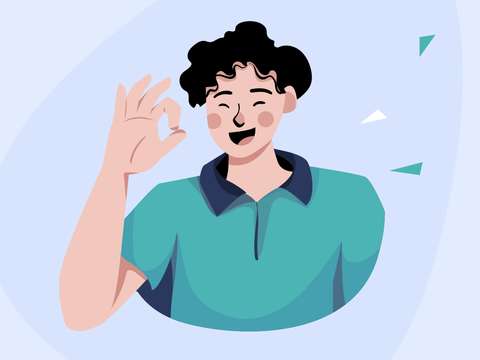Reducing returns in eCommerce with return management software is essential if you want to maintain your business's profitability. In the following article, we explain the best ways to minimize product returns to keep your revenue safe.
Why reducing eCommerce returns matters
Product returns are more than just an inconvenience—they're a direct threat to your bottom line. Each return chips away at your profits through costs like reverse shipping, restocking, and additional customer service time. On top of that, returns represent missed sales opportunities and can erode customer trust if the experience is frustrating or frequent.
The financial impact is undeniable. According to McKinsey & Company, return costs can eat up 10-20% of your total sales revenue, turning what seems like a profitable business into a logistical and financial strain. Beyond the numbers, high return rates indicate unmet customer expectations, whether due to unclear product descriptions, sizing issues, or unmet delivery promises.
By reducing returns, you not only protect your profits but also enhance your customer experience, build loyalty, and create a smoother, more reliable shopping journey. In today’s competitive eCommerce landscape, minimizing returns isn’t just a strategy—it’s a necessity for sustainable growth.
How to reduce product returns in e-commerce: Summary table
| Strategy | Description |
|---|---|
| Set Realistic Goals | Tailor return reduction targets to your industry and analyze data to create effective strategies. |
| Understand Return Reasons | Analyze return data, surveys, and customer feedback to address common issues and reduce occurrences. |
| Encourage Exchanges | Offer store credit, free exchanges, or automated systems to promote exchanges over refunds. |
| Improve Lead Quality | Prioritize traffic sources with lower return rates by analyzing buyer behavior and ad performance. |
| Send Timely Notifications | Use real-time updates for orders to improve communication and reduce misunderstandings or delivery issues. |
| Optimize Product Descriptions | Provide accurate, detailed descriptions, highlighting benefits, features, and measurements. |
| Use High-Quality Images | Offer professional, detailed visuals with multiple angles, zoom features, and contextual imagery. |
| Enhance Customer Support | Equip support teams with product knowledge and offer multiple support channels for quick issue resolution. |
| Prevent Return Fraud | Implement checks like requiring reverse shipments and inspecting returned items to minimize fraudulent returns. |
| Integrate Size Guides | Offer detailed and clear size guides with measurements, fit recommendations, and body type considerations. |
| Enable Virtual Fitting Rooms | Use augmented reality for virtual try-ons, despite current limitations, to guide size and style choices. |
| Integrate Chatbots | Use chatbots to address quick queries and reduce returns due to unmet expectations or unclear product details. |
| Educate Customers | Provide user guides, instructional videos, and educational content for proper product usage. |
| Leverage Product Reviews | Highlight honest reviews and respond professionally to assist customer decision-making. |
| Ensure On-Time Deliveries | Collaborate with reliable carriers, provide tracking, and proactively manage delays to build trust. |
| Use Sturdy Packaging | Customize packaging to product needs, simulate shipping conditions, and train staff in secure packing methods. |
| Verify Products Before Shipping | Implement thorough checks of orders against packing lists and use automated scanning to ensure accuracy. |
| Invest in Return Management Software | Use software like Outvio to automate returns, cut logistics costs, and create upselling opportunities. |
The best strategies to reduce returns in your eCommerce
1. Establish Realistic Return Reduction Goals for Your eCommerce
A common mistake made by eCommerce businesses is comparing their return rates to unrelated industries. Setting an inappropriate return rate goal can lead to misguided strategies.
For instance, it would be ineffective for an online clothing retailer to imitate the practices of a furniture company. Instead, focus on developing tailored strategies that align with your specific industry and product category. Setting achievable return reduction targets can increase your chances of success and enhance your financial performance.
It's crucial to comprehend the average return rate and typical percentages for the industry in which you operate. The National Retail Federation reports that the average return rate for online purchases hovers around 20%. Additionally, the Statista platform provides valuable insights into the most prevalent return rates across various industries and eCommerce categories.
By carefully analyzing your return data, understanding industry benchmarks, and tailoring your strategies to your unique business, you can effectively reduce return rates and achieve financial success in the eCommerce realm.
| Industry | Return Rate | Effective Strategy |
|---|---|---|
| Clothing | 26% | Encourage exchanges over refunds with personalized product recommendations by implementing return management software. |
| Bags and Accessories | 19% | Offer clear product images and descriptions to showcase the unique features and details of each item. |
| Shoes | 19% | Provide accurate sizing information and offer a wider range of widths to accommodate different foot types. |
| Accessories | 13% | Offer a variety of styles and price points to appeal to a wider range of customers and reduce the likelihood of returns due to personal preferences. |
| Electronics | 11% | Provide clear product specifications, user manuals, and setup guides to help customers get the most out of their purchases and reduce the need for returns due to product malfunction or usability issues. |
| Cosmetics and Body Care | 9% | Offer samples or trial sizes to allow customers to test products before committing to a full-size purchase. |
| Food and beverage | 9% | Provide accurate product expiration dates and offer clear return policies for non-consumable items. |
| Books, Movies, Music, & Game | 6% | Offer digital copies of products alongside physical copies to cater to customers who prefer digital formats. |
| Sports and Outdoor Products | 6% | Provide detailed product descriptions, including performance specifications and usage guidelines, to help customers make informed purchasing decisions |
| DIY and Garden | 5% | Offer project kits or pre-cut materials to simplify DIY projects and reduce the likelihood of returns due to missing or incompatible components. |
| Pet Products | 5% | Offer a variety of sizes, styles, and options to accommodate different pet breeds and preferences. |
| Stationery and Hobby Supplies | 5% | Provide clear product descriptions, including compatibility with specific products or brands, to avoid returns due to compatibility issues. |
| Furniture | 6% | Offer 3D product views, assembly instructions, and clear return policies to help customers visualize the furniture and ensure a smooth return process if necessary. |
Even though we've highlighted strategies tailored to specific industries, it's essential to recognize that certain fundamental principles go beyond industry boundaries and are vital for any business. These principles include delivering quick and informative return notification messages and providing a smooth, personalized process through an automated return portal.
2. Understand the reasons behind each return
Understand the underlying reasons behind customer returns to effectively address them and minimize their occurrence. By analyzing return data and customer feedback, you can identify common patterns and implement targeted solutions to reduce returns in your eCommerce business. Here are a few ways how you can gather valuable information for this:
- Tracking return reasons: Analyze return data to identify the most common reasons for returns, such as product defects, sizing issues, or shipping errors. This data-driven approach provides valuable insights into problem areas.
- Return surveys: Implement return surveys to gather detailed feedback from customers regarding their reasons for returning items. These surveys can provide specific insights into customer perceptions and pain points.
- Customer interviews: Conduct in-depth interviews with customers who have returned products to gain a deeper understanding of their experiences and motivations. This qualitative approach provides valuable context and nuances.
3. Encourage product exchanges over returns
Embracing product exchanges over returns is a strategic move for eCommerce businesses seeking to minimize revenue loss and potentially generate additional sales. Here are some practical strategies to effectively implement this approach:
- Offer Store Credit: Provide customers with the option to receive store credit instead of a full refund for returned items. This flexible option empowers them to select a different product or upgrade to a higher-value item, potentially increasing their spending.
- Implement an Automated Exchange System: Streamline the exchange process by incorporating a user-friendly interface that effortlessly guides customers through each step. Utilize the exchange flow as an opportunity to suggest additional items, potentially leading to a new sale.
- Promote free exchanges: Allow users to exchange products for free instead of return. This approach might result in the eCommerce business incurring additional shipping costs, but the initial margin will remain within the online store.
Related article
Discover effective return processes and strategies to minimize product returns. Enhance customer relationships by offering a convenient shopping infrastructure.
4. Reduce returns by improving the quality of leads
The user acquisition channel plays a crucial role in influencing varying return rates. While many eCommerce marketers and managers often choose traffic channels with higher conversion rates, only a few take the extra step to delve into analytics, considering the return rate from specific traffic sources.
Let's compare two scenarios for better clarity. For the sake of simplicity, let's assume we have two advertising channels with equal traffic, acquisition costs, and average order values.
Case 1:
Let’s say we attracted 100 purchases from channel A with an average order value of $46, while the return rate for all these purchases was 30%. It seems like you just ran a campaign that made you $4,600, doesn't it? But now, let's factor in the $1380 worth of returns. In the best-case scenario, your profit would be $3,220 and this is excluding all incurred reverse shipping costs, restocking fees etc.
Case 2:
Now, imagine we made only 75 sales from channel B with the same acquisition cost as in Case 1, but the return rate is a mere 4%. Your advertising report might show profits of only $3,450, but after counting for returns, your real profit would be $3,312. And you would have much lower reverse shipping and returns processing cost, resulting in significant operational savings.
While advertising statistics might suggest that channel A is performing 33% better than channel B (bringing in 100 purchases instead of 75), a closer look at return statistics by traffic source might lead you to prioritize channel B.
Filtering customers based on traffic sources and analyzing the average return rate within each group can offer more valuable insights than solely concentrating on conversion rates and average order values. Choosing channels with lower return rates is an additional effective tactic for enhancing your advertising strategy.
Lead quality influencers in eCommerce
Audiences
The primary and most crucial factor influencing lead quality is the audience. Each application, website, or social media platform caters to a different user base. When crafting your online advertising strategy, understanding your Buyer Persona is key. You need to be aware of the platforms where your ideal customers are likely to be found. Running ads on irrelevant channels might drive sales initially, but it can result in a higher return rate. Users might make impulsive purchases, only to realize upon receiving the product that there's no genuine need for it, leading to returns.
Ad formats
Certain ad types on specific platforms may show higher conversion rates, leading to potentially significant sales. However, a critical factor influencing returns is the information users receive about the product through these ads. Limited space for text or insufficiently large images may hinder the ability to showcase crucial properties of the product. In such cases, the ad format might give users a misleading impression, prompting them to make a purchase that they later decide to return upon delivery.
Ad content
Video ads continue to be a highly effective advertising method across various product categories. However, there are instances where the videos used by advertisers may exhibit slight discrepancies with the actual product. For example, an ad video might showcase colors that are not available in the current stock of stores. Alternatively, ads may feature older versions of the product with visual differences from the one currently for sale. These discrepancies can contribute to an elevated return rate, ultimately impacting the overall profitability of the business.
Recommend to read
Unlock latest strategies and insights about return management by reading our comprehensive guide.
5. Keep customers informed with well-timed notifications
Elevate your customer experience by implementing personalized order notifications that offer real-time insights into their purchases. These tailored notifications not only build trust but also play a pivotal role in minimizing return risks, errors, misunderstandings, and delivery issues.
Crafting notifications that resonate with individual customers is key. Provide them with pertinent information at crucial junctures such as order confirmation, shipping updates, and delivery notifications. Tailoring these communications to address specific customer concerns ensures a more meaningful and positive interaction.
Moreover, notifying customers when their order is out for delivery ensures they are prepared to receive it, further reducing the likelihood of delivery issues. This strategic approach not only boosts customer satisfaction but also contributes to higher repeat purchase rates, reinforcing the value of investing in robust notification systems.
6. Optimize product descriptions
Crafting effective product descriptions is essential for eCommerce success, influencing customer decisions and reducing returns in eCommerce. To optimize these descriptions:
- Emphasize Benefits: Focus on the benefits of product features rather than just listing them. Clearly explain how features contribute to the product's durability, lifespan, and resistance to wear and tear.
- Use Clear Language: Avoid jargon and technical terms that may alienate customers. Strive for clarity and simplicity, using language that resonates with your target audience.
- Utilize Visuals: Enhance product descriptions with high-quality images showcasing design, features, and functionality. Consider incorporating videos demonstrating product use or installation.
- Provide Accurate Measurements: Clearly state product dimensions to avoid surprises upon delivery. Customers appreciate knowing the exact size to ensure the product meets their needs.
- Highlight Differences: Compare your product to similar ones in the market, emphasizing unique features, advantages, and price points. This aids customers in understanding your product's value proposition and facilitates informed decision-making.
7. Use high-quality product images
In the realm of online shopping, the impact of product images on purchase decisions cannot be overstated. Investing in top-notch visuals is not just a luxury; it's a strategic necessity to minimize returns and elevate customer satisfaction.
- Professional lighting for precision: Illuminate your products with the utmost accuracy by employing proper lighting techniques. Steer clear of harsh or uneven illumination, opting instead for soft, diffused lighting that uniformly highlights the product from various angles.
- Sharp focus for clarity: Equip yourself with high-quality cameras and lenses to capture images that are not only sharp but also rich in detail, offering an authentic representation of the product's appearance. Blurry or out-of-focus images can lead to customer confusion and dissatisfaction, potentially contributing to an increased likelihood of returns.
- Comprehensive views from multiple angles: Present your products comprehensively by capturing images from various angles—front, back, side, and top views. This approach provides customers with a holistic understanding of the product, empowering them to visualize it in different dimensions.
- Contextual imagery for realism: Go beyond the basic product shots and showcase your offerings in realistic settings or being used by customers. This allows potential buyers to envision how the product fits into their lives, making more informed decisions and reducing the likelihood of post-purchase regret.
- Zoomable images for detailed inspection: Offer customers the ability to zoom in on specific details of your products. This feature facilitates a closer examination of craftsmanship, materials, and features, significantly enhancing their understanding of the product's quality.

8. Enhancing Customer Support to Minimize Returns
Customers who encounter subpar customer service are more likely to initiate a return. To minimize return rates and foster customer satisfaction, your customer service department must prioritize prompt and helpful responses to customer inquiries. Here are some effective strategies to elevate your customer support services:
- Empowered Customer Service Representatives: Equip your customer service representatives with in-depth product knowledge to address issues promptly and professionally. Access to comprehensive product specifications, warranty information, and return policies ensures seamless customer support.
- Streamlined Operations: Leverage technology to automate routine tasks like order confirmations and shipping notifications. This frees up your customer support team to focus on more complex issues and deliver exceptional service.
- Convenient Support Channels: Offer a diverse range of support channels, including phone, email, live chat, and social media. This ensures customers have easy access to support, regardless of their preferred communication method.
- Clear and Concise Return Policies: Craft clear and concise return policies that are easy for customers to understand and follow. This eliminates ambiguities and reduces the likelihood of returns due to misunderstandings.
- Proactive Support Measures: Implement proactive support measures such as sending emails or SMS messages after a purchase. This helps identify potential issues early on and provides customers with the opportunity to seek assistance before they escalate into returns.
9. Prevent return fraud
Fraudulent returns are a massive pain for eCommerce businesses globally. Some customers abuse return policies for personal gain and bring huge losses to online stores. The most affected industries that report more fraud are Apparel and Electronics. The number may vary from country to country, but on average in the Apparel industry, 7% to 9% of all returns are fraudulent.
We have a detailed article about preventing return fraud, but here are some fast tips you can implement to reduce it right away:
- Don't refund money before receiving a reverse shipment. This will help to avoid empty box scams.
- Examine products after receiving a return carefully. One type of return fraud involves switching premium-class products with cheap, fake analogs.
- Ask clients to provide pictures or video of the product they are going to send back to ensure in which condition the product was sent back to avoid placing blame on the courier for damaging it in transit.
- Cooperate with fraud prevention services like SEON or ClearSale to minimize risks of fraud in your online store. It will not guarantee you 100% protection, but if you have a big online store, preventing even 2% of fraudulent returns can potentially impact your revenue.
10. Integrate a size guide
A comprehensive size guide is an indispensable tool for apparel and fashion eCommerce stores, enabling customers to make well-informed size selections and reduce the likelihood of returns. By providing detailed measurements, tailored fit recommendations, and insights into various body types, size guides empower customers to confidently choose the right size for their needs.
- Comprehensive measurements: Include detailed measurements for key areas like bust, waist, hips, and inseam in a consistently clear format for accuracy.
- Distinctive size charts: Create specific size charts for clothing categories (tops, bottoms, dresses, outerwear) to offer tailored size guidance.
- Clarity and conciseness: Provide clear and concise fit recommendations for each size, using illustrative diagrams to visually explain fit options like ease of movement, snugness, and style preferences.
- Personalized recommendations: Offer size recommendations tailored to different body types, ensuring a suitable fit for curvier figures, petite physiques, and athletes.
- Direct linking: Ensure easy access to the size guide by linking it directly from product pages, encouraging customers to consult it before purchasing and reducing returns due to sizing discrepancies.
- Utilize past order data: Notify customers about size discrepancies reported in previous orders, especially regarding products that were mentioned as either too small or too large.
11. Enable a virtual fitting room
The use of virtual fitting rooms, powered by augmented reality (AR), has revolutionized the landscape of online shopping by allowing customers to virtually try on clothing and accessories before making a purchase. At Outvio, we acknowledge the transformative potential of this technology, although we currently see room for improvement, anticipating advancements in the near future.
Presently, there are challenges associated with AI accurately measuring all features of the human body and addressing the anthropometric variations unique to each individual, which remains an unsolved problem. Realistically simulating the appearance of clothing on the virtual body is another hurdle. While this technology can provide a rough representation of how the clothing will look, we believe that it may not be sufficient for accurately advising customers on the right size. Despite these challenges, we remain optimistic that future developments may overcome these limitations.
12. Integrate a chatbot
Integrating chatbots into live chat services presents an intriguing avenue for transforming eCommerce businesses, fostering client-centricity, speed, and responsiveness. In many instances, customers have quick queries about products that may not warrant opening a support ticket, and waiting for a response from customer support can be time-consuming. This scenario often leads to incomplete orders or, in some cases, purchases that result in returns due to unmet expectations.
A chatbot proves exceptionally useful in such scenarios. By facilitating real-time, personalized interactions, chatbots empower customers to seek clarification, resolve concerns, and make informed purchasing decisions. This proactive engagement minimizes returns resulting from misunderstandings or dissatisfaction.
While chatbots cannot replace human customer support entirely, they excel in handling typical questions related to online store policies or product features. This strategic use of chatbots enhances resource organization, directing human intervention only when the situation requires a personalized and specific approach.
13. Educate your customers about your products
Educating customers about products is a crucial strategy for eCommerce businesses operating in industries such as professional equipment, safety goods, furniture, and mechanics. To achieve this goal, businesses can create valuable content and user guides to help customers understand the benefits of their products and how to use them effectively.
Furthermore, integrating educational messages into order confirmation emails can enhance customer understanding. For instance, including a message that explains product usage or provides a link to a user guide can be beneficial.
For products that require assembly, providing a clear and concise instruction manual is essential. A well-crafted manual guides customers through the assembly process, reducing the need for customer service inquiries and ensuring a smooth experience for the customers.
14. Include useful product reviews along your site
Feedback from previous customers adds significant value to those currently in the buying mode. It's essential not to conceal negative feedback about the products offered, as these opinions can assist users in selecting products less likely to be returned. Here are some key practices we recommend:
- Encourage Honest and Detailed Reviews: Implement mechanisms to ensure reviews are authentic, objective, and offer valuable insights into the product's performance and features. Honest and detailed reviews contribute to a more informed decision-making process.
- Highlight Top-Rated Reviews: Showcase positive reviews prominently to emphasize the product's strengths. This encourages potential customers to make informed purchasing decisions based on the positive experiences of others.
- Respond to Reviews Promptly and Professionally: Address both positive and negative feedback promptly and professionally. Responding to reviews demonstrates a commitment to customer satisfaction and allows you to provide additional information or assistance when needed.
15. Provide on-time deliveries
Ensuring timely deliveries is crucial for eCommerce businesses to maintain customer satisfaction and reduce return rates. For many customers, delivery time is a top priority, especially when ordering professional equipment or clothing for special occasions such as weddings or vacations. In such cases, adhering to the promised delivery terms is vital, as customers may no longer need the item if it arrives late, leading to an immediate return. By implementing strategies that prioritize on-time deliveries, businesses can foster trust, loyalty, and long-term success.
- Effective order tracking: Provide customers with real-time updates on their order status through order notifications and a user-friendly tracking portal. This transparency instils confidence and reduces anxiety, allowing customers to promptly anticipate any potential delivery-related issues. This proactive approach minimizes the impact of delays or disruptions, reducing customer frustration and the likelihood of returns.
- Proactive incident management: Implement an automated incident resolution system to effectively handle potential delays and ensure timely deliveries. This system allows for prompt and efficient resolution of some issues, further enhancing the overall customer experience.
- Analyze carrier performance: Collaborate with carriers that exhibit the best performance and have fewer shipping incidents. Scrutinize delivery data in the return management system, analyzing metrics for each carrier. Evaluate factors such as average delivery time, delay time, overall number of delayed orders, and the carrier's return rate due to delayed orders. Choosing the right carrier is a significant factor that can positively impact your customer experience.
16. Pack products with sturdy materials
Ensuring the use of sturdy packaging materials is essential for eCommerce businesses aiming to protect products during transportation and reduce returns attributed to damage. Here is what you can do about it:
- Product-specific material selection: Carefully assess the dimensions, fragility, and shipping conditions of each product to determine the most appropriate packaging materials. This customized approach ensures optimal protection tailored to the specific needs of various product types.
- Thorough shipping simulations: Conduct comprehensive shipping simulations to evaluate the effectiveness of packaging materials in withstanding potential hazards during transportation. These simulations provide valuable insights into areas for improvement, enhancing the overall protective capabilities of the packaging.
- Employee training for proper packaging: Provide employees with training in proper packaging techniques, covering aspects such as selecting the right box, providing adequate cushioning, and labelling. This training ensures that products are handled with care throughout the packaging process, minimizing the risk of damage during transit.
17. Verify products before shipping
To minimize returns stemming from product discrepancies, it is imperative to implement a rigorous product verification process prior to shipping orders. By meticulously checking each product for accuracy and completeness, you can guarantee that customers receive the items they ordered, thereby reducing return frequencies and enhancing overall customer satisfaction.
Key steps for effective product verification include:
- Thorough order review: Carefully examine each order against the corresponding packing list to ensure that the correct items are included in the right quantities. This manual check serves as a baseline for accuracy.
- Automated scanning: Employ barcode scanners or digital inventory checkers to verify product quantities and identify any discrepancies. These tools automate the verification process, reducing errors and enhancing overall efficiency.
- Double-checking: Institute a double-checking system where a second employee independently verifies the order, ensuring the accuracy of the initial check. This redundancy further minimizes the risk of errors.
- Establish clear guidelines: Clearly define and communicate verification procedures to all employees involved in the packing process. Standardizing these processes ensures consistency and reduces the likelihood of human error.
18. Reduce product returns with eCommerce software
Investing in top-notch return management solution can significantly enhance your store's operational efficiency. Tailored to optimize the entire return management process, this software not only reduces return rates but also streamlines management tasks, cuts down on logistics costs, enhances the overall customer experience, and opens avenues for effective cross-selling strategies.
Consider the Outvio returns portal as your key to unlocking a competitive edge that sets your business apart from the rest. With a robust set of features, this platform equips you with the tools needed to transform returns into a strategic advantage, bolstering customer satisfaction and boosting your bottom line.
Conclusion
In conclusion, effectively reducing returns in eCommerce is not only achievable but crucial for sustaining profitability. Tailoring strategies to specific industries and adhering to fundamental principles such as understanding return reasons and encouraging exchanges over returns are essential. Embracing data-driven insights, combating return fraud, and optimizing lead quality contribute significantly.
The integration of innovative solutions, including size guides, virtual fitting rooms, and chatbots, can personalize interactions and enhance customer satisfaction. Educating customers through content, improving product descriptions, and utilizing high-quality images further minimize return likelihood.
Elevating customer support and investing in advanced return management software, exemplified by Outvio, emerge as strategic imperatives. This comprehensive approach transforms returns from a cost burden into a competitive advantage, fostering customer loyalty and bolstering overall business success.




